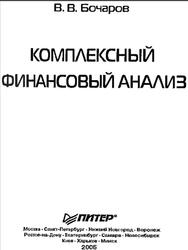Fragmentation, the search for liquidity, and high-frequency traders: These are the realities of modern markets. Traditional models of market microstructure have studied the highly simplified interaction between an idealized market-maker or specialist and a stream of external orders that may come from noise traders or informed traders. In the modern marketplace, the market itself is replaced by a loosely coupled network of visible and hidden venues, linked together by high-frequency traders and by algorithmic strategies. The distinction between market-makers who post liquidity and directional traders who take liquidity no longer exists. All traders are searching for liquidity, whichmaybe flickering acrossmanydifferent locations with varying latencies, fill probabilities, and costs. That is the world this book addresses, treating these issues as central and fundamental rather than unwelcome complexities on top of a simple framework.

Liquidity in Question.
Liquidity is a word often used in the context of financial markets. Nevertheless, it is not that simple to define with accuracy. Some simple qualitative definitions exist, like this one: An asset is liquid if it is easy to buy and sell it. We immediately see the importance of liquidity: If an investor values an asset at one price, and wants to buy and hold it for a few months before selling it, he needs to quantify its associated liquidity risk. How much will he really have to pay to buy it once he makes the investment decision? It may take days to find the needed liquidity in the market, and during this period, the price can change in an adverse way. Moreover, potential sellers may have the same information as the investor (or deduce that the price should go up by observing the dynamics of the orderbooks) and consequently if the buyer is not stealthy enough, they can offer to sell at worse prices for the buyer. This last effect is known as market impact. Finally, when he wants to sell the asset, will the market remember that he bought so many shares and offer only unfavorable prices?
Seen from a very short-term view, we can consider the bid-ask spread (i.e. the distance between the best bid and the best ask prices) as a proxy of liquidity, however it does not put enough emphasis on the quantities available to buy or sell at these levels of prices. A round trip cost (net loss on an immediate buy then sell, see Figure 1) of a given quantity is for sure a better proxy of liquidity But it is not just a number: If we compute this over several quantities, we get a curve associating a price to each possible demanded quantity.
Contents.
Foreword by.
Robert Almgren.
Bertrand Patillet.
Philippe Guillot.
Albert J. Menkveld.
Preface by.
Charles-Albert Lehalle.
Sophie Laruelle.
About the Editors.
About the Contributors.
Introduction.
1. Monitoring the Fragmentation at Any Scale
1.1 Fluctuations of Market Shares: A First Look at Liquidity.
1.1.1 The market share: A not so obvious liquidity metric.
1.1.2 Phase 1: First attempts of fragmentation.
1.1.3 Phase 2: Convergence towards a European offer.
1.1.4 Phase 3: Apparition of broker crossing networks and dark pools.
1.2 SOR (Smart Order Routing), A Structural Component of European Price Formation Process.
1.2.1 How to route orders in a fragmented market?.
1.2.2 Fragmentation is a consequence of primary markets’ variance.
1.3 Still Looking for the Optimal Tick Size.
1.3.1 Why does tick size matter?.
1.3.2 How tick size affects market quality.
1.3.3 How can tick size be used by trading venue to earn market share?.
1.3.4 How does tick size change the profitability of the various participants in the market?.
1.3.5 The value of a quote.
1.4 Can We See in the Dark?.
1.4.1 Mechanism of dark liquidity pools.
1.4.2 In-depth analysis of dark liquidity.
2. Understanding the Stakes and the Roots of Fragmentation.
2.1 From Intraday Market Share to Volume Curves: Some Stationarity Issues.
2.1.1 Inventory-driven investors need fixing auctions.
2.1.2 Timing is money: Investors’ optimal trading rate.
2.1.3 Fragmentation and the evolution of intraday volume patterns.
2.2 The Four Main Liquidity Variables: Traded Volumes, Bid–Ask Spread, Volatility and Quoted Quantities.
2.3 Does More Liquidity Guarantee a Better Market Share? A Little Story About the European Bid–Ask Spread.
2.3.1 The bid–ask spread and volatility move accordingly.
2.3.2 Bid–ask spread and market share are deeply linked.
2.3.3 Exchanges need to show volatility-resistance.
2.4 The Agenda of High Frequency Traders: How Do They Extend their Universe?.
2.4.1 Metrics for the balance in liquidity among indexes.
2.4.2 A history of coverage.
2.4.3 High-frequency traders do not impact all investors equally.
2.5 The Link Between Fragmentation and Systemic Risk.
2.5.1 The Spanish experiment.
2.5.2 The Flash Crash (May 6, 2010) in NY: How far are we from systemic risk?.
2.5.3 From Systemic Risk To Circuit Breakers
2.6 Beyond Equity Markets.
3. Optimal Organizations for Optimal Trading
3.1 Organizing a Trading Structure to Answer a Fragmented Landscape.
3.1.1 Main inputs of trading tools.
3.1.2 Components of trading algorithms.
3.1.3 Main outputs of an automated trading system.
3.2 Market Impact Measurements: Understanding the Price Formation Process from the Viewpoint of One Investor.
3.2.1 Market impact over the trading period.
3.2.2 Market impact on a longer horizon: Price anticipation and permanent market impact.
3.3 The Price Formation Process and Orderbooks Dynamics.
3.3.1 Information reaching orderbooks.
3.3.2 Understanding via conditioning.
3.3.3 Conclusion on orderbook dynamics.
3.4 Optimal Trading Methods.
3.4.1 Algorithmic trading: Adapting trading style to investors’ needs.
3.4.2 Liquidity-seeking algorithms are no longer nice to have.
3.4.3 Conclusion on optimal trading.
Appendix A: Quantitative Appendix.
A.1 From Entropy to FEI (Fragmentation Efficiency Index).
A.2 Information Seeking and Price Discovery.
A.3 A Simple Model Explaining the Natural Fragmentation of Market Microstructure.
A.3.1 A toy model of SOR dynamics.
A.3.2 Atoy model of the impact of SOR activity on the market shares.
A.3.3 A coupled model of SOR-market shares dynamics.
A.3.4 Simulations.
A.3.5 Qualitative analysis.
A.4 Kyle’s Model For Market Making.
A.5 A Toy Model of the Flash Crash.
A.5.1 A market depth-oriented model.
A.5.2 Impact of the Flash Crash on our model.
A.6 Harris Model: Underlying Continuous Spread Discretized by Tick.
A.7 Optimal Trade Scheduling.
A.7.1 The trading model.
A.7.2 Towards a mean–variance optimal trade scheduling.
A.7.3 A Simple Stochastic Control Framework.
A.8 Estimation of Proportion and its Confidence Intervals.
A.8.1 Application to the estimation of the market share of venues on an asset.
A.8.2 Aggregation or application to the market share on an index.
A.8.3 Comparison of the estimators.
A.9 Gini Coefficient and Kolmogorov–Smirnov Test.
A.9.1 Gini coefficient.
A.9.2 Kolmogorov–Smirnov test.
A.9.3 Practical implementation.
A.10 Simple Linear Regression Model.
A.10.1 Model presentation.
A.10.2 Application to relation between spread and volatility.
A.11 Time Series and Seasonalities.
A.11.1 Introduction to time series.
A.11.2 Example of volume model.
A.12 Clusters of Liquidity.
A.12.1 Introduction to point processes.
A.12.2 One-dimensional Hawkes processes.
A.12.3 The propagator model.
A.13 Signature Plot and Epps Effect.
A.13.1 Volatility and signature plot.
A.13.2 Correlation and Epps effect.
A.14 Averaging Effect.
A.14.1 Mean vs. path.
A.14.2 Regression of average quantities vs. mean of the regressions.
Appendix B: Glossary.
Bibliography.
Index.
Бесплатно скачать электронную книгу в удобном формате, смотреть и читать:
Скачать книгу Market Microstructure in Practice, Lehalle C., Laruelle S., 2018 - fileskachat.com, быстрое и бесплатное скачивание.
Скачать pdf
Ниже можно купить эту книгу, если она есть в продаже, и похожие книги по лучшей цене со скидкой с доставкой по всей России.Купить книги
Скачать - pdf - Яндекс.Диск.
Дата публикации:
Теги: учебник по финансам :: финансы :: Lehalle :: Laruelle
Смотрите также учебники, книги и учебные материалы:
Следующие учебники и книги:
Предыдущие статьи:












